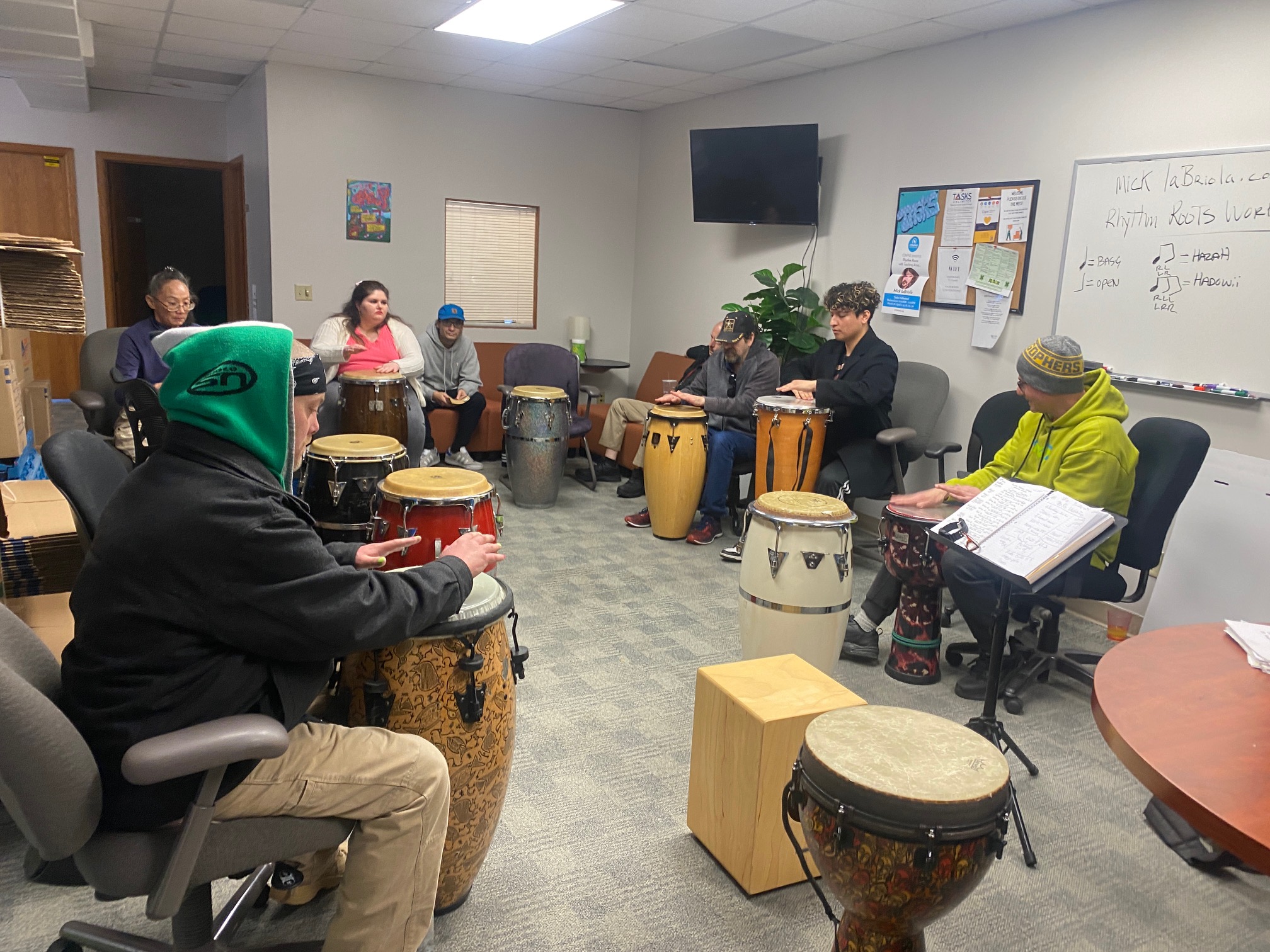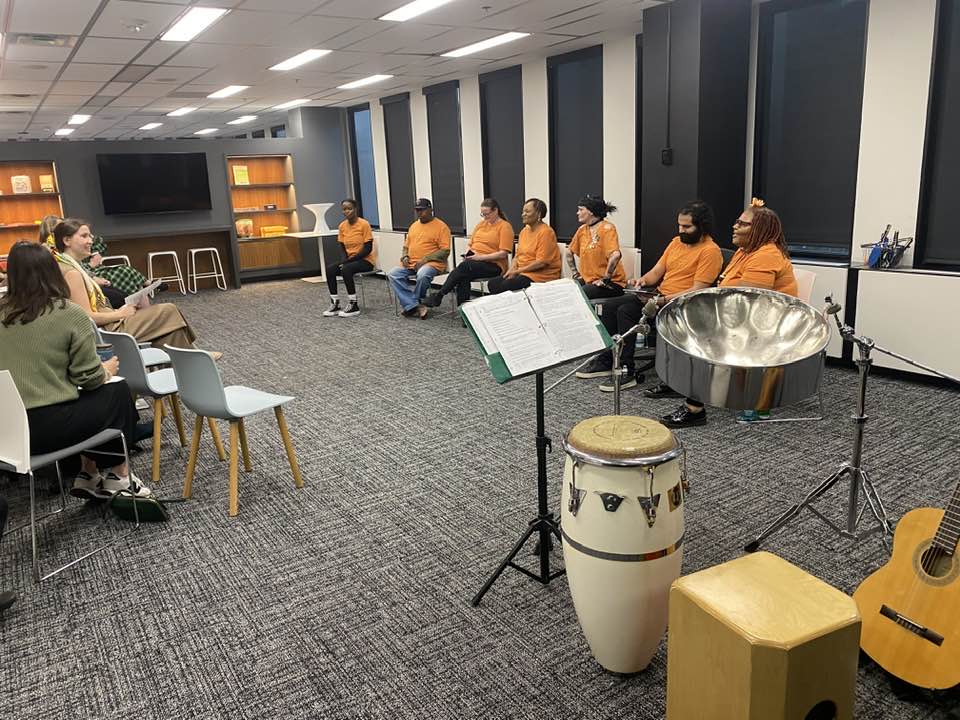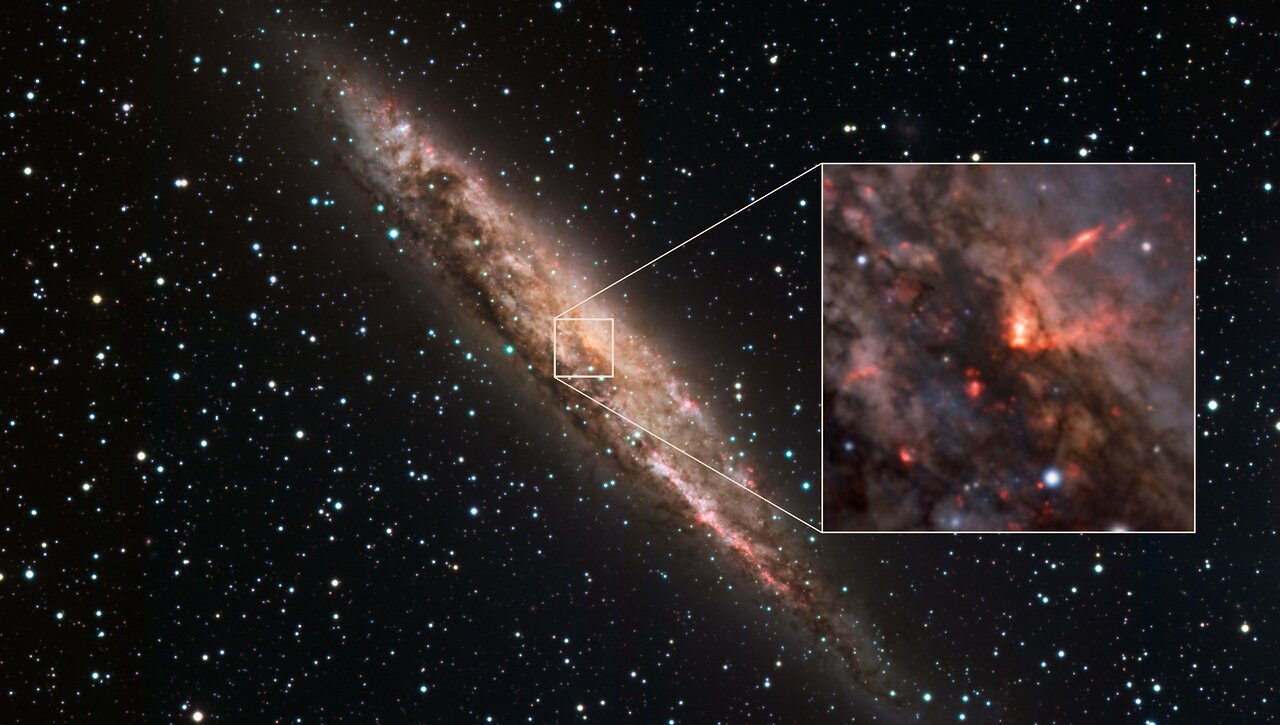Blog
James Harrell McGriff (April 3, 1936 – May 24, 2008) was an American hard bopand soul-jazz organist and organ trio bandleader. McGriff formed a combo that played around Philadelphia and often featured tenor saxophonist Charles Earland (who soon switched permanently to organ, and became one of the instrument’s renowned performers). During this time, McGriff also accompanied such artists as Don Gardner, Arthur Prysock, Candido and Carmen McRae, who came through town for local club dates.
more...
Rocco Scott LaFaro (April 3, 1936 – July 6, 1961) was an American jazz double bassist known for his work with the Bill Evans Trio. LaFaro broke new ground on the instrument, developing a countermelodic style of accompaniment rather than playing traditional walking basslines, as well as virtuosity that was practically unmatched by any of his contemporaries. Despite his short career and death at the age of 25, he remains one of the most influential jazz bassists, and was ranked number 16 on Bass Playermagazine’s top 100 bass players of all time. LaFaro died in an automobile accident on July 6, 1961, in Seneca, New York, on U.S. Route 20 between Geneva and Canandaigua, four days after accompanying Stan Getz at the Newport Jazz Festival.
more...Teaching a Rhythm Roots Workshop Residency at Tasks Unlimited Wednesday April 2nd 2025 11am-1pm. Second class in a Wednesday series of 6 sessions. Exploring rhythms of Egypt, Algeria, Bulgaria, Dominican Republic, Spain and more. Culminating into a Performance on April 30th. Tasks Unlimited provides supported employment, housing and recovery services for people with mental illness so that they achieve a full life with the rights and responsibilities of adults in our society.

more...
NGC 1893 is an open cluster in the constellation Auriga. It is about 12,400 light years away. The star cluster is embedded in the Tadpole Nebula (HII region IC 410). Images of the star cluster by the Chandra X-ray Observatory suggest that it contains approximately 4,600 young stellar objects.

Emmylou Harris (born April 2, 1947) is an American singer, songwriter, musician, bandleader, and activist. She is considered one of the leading music artists behind the country rock genre in the 1970s and the Americana genre in the 1990s. Her music united both country and rock audiences in live performance settings. Her characteristic voice, musical style and songwriting have been acclaimed by critics and fellow recording artists.
Harris developed an interest in folk music in her early years, which led to her performing professionally. After moving to New York City in the 1960s, she recorded a folk album and performed regionally. She was discovered by Gram Parsons, who influenced her country rock direction. Following his 1973 death, Harris obtained her own recording contract from Reprise–Warner Bros. Her second album, Pieces of the Sky (1975), found both critical acclaim and commercial success. Follow-up 1970s albums further elevated Harris’s career, such as Elite Hotel (1976), Quarter Moon in a Ten Cent Town (1978) and Blue Kentucky Girl (1979). By 1980, she had acquired four number-one songs on the US and Canadian country charts: “Together Again“, “Sweet Dreams“, “Two More Bottles of Wine” and “Beneath Still Waters“.
Harris had a continued string of commercially and critically successful albums like Roses in the Snow (1980), Evangeline (1981) and Last Date (1982). Her backing group, the Hot Band helped establish a musical foundation for her concerts and albums. Her 1980s albums spawned the top ten singles “Wayfaring Stranger“, “Born to Run” and “Last Date“. The 1985 album The Ballad of Sally Rose was among Harris’s first self-written projects. The album (along with its follow-ups) failed to sustain the commercial momentum of previous albums. Harris then collaborated with Dolly Parton and Linda Ronstadt on Trio (1987). The platinum-selling album was also a critical success that spawned four top ten singles.
In 1992, Warner Bros. released the live album At the Ryman. It garnered critical praise and renewed interest in its live venue, the Ryman Auditorium. Harris was inspired to move in a new musical direction with 1995’s Wrecking Ball. She then reunited with Dolly Parton and Linda Ronstadt for Trio II (1999). By the 2000s, Harris had signed with Nonesuch Records and recorded several albums of self-composed material like Red Dirt Girl (2000), All I Intended to Be (2008) and Hard Bargain (2011). She also found collaborative partnerships, such as with Mark Knopfler on the internationally successful All the Roadrunning (2006). She then collaborated with Rodney Crowell on the critically acclaimed Old Yellow Moon (2013) and The Traveling Kind (2015). She also became involved in activism during this time, including starting her own dog rescue called Bonaparte’s Retreat.
more...Marvin Pentz Gaye Jr. (Gay; April 2, 1939 – April 1, 1984) was an American singer, songwriter, musician, and record producer. He helped shape the sound of Motown in the 1960s, first as an in-house session player and later as a solo artist with a string of successes, which earned him the nicknames “Prince of Motown” and “Prince of Soul“.
Gaye’s Motown hits include “How Sweet It Is (To Be Loved by You)” (1964), “Ain’t That Peculiar” (1965), and “I Heard It Through the Grapevine” (1968). He also recorded duets with Mary Wells, Kim Weston, Tammi Terrell, and Diana Ross. During the 1970s, Gaye became one of the first Motown artists to break away from the reins of a production company and recorded the landmark albums What’s Going On (1971) and Let’s Get It On (1973).
His later recordings influenced several R&B subgenres, such as quiet storm and neo soul. “Sexual Healing“, released in 1982 on the album Midnight Love, won him his first two Grammy Awards. Gaye’s last televised appearances were at the 1983 NBA All-Star Game, where he sang “The Star-Spangled Banner“, Motown 25: Yesterday, Today, Forever in 1983, and on Soul Train.
On April 1, 1984, Gaye intervened during a fight between his parents at their home in Western Heights, Los Angeles. Gaye’s father, Marvin Gay Sr., subsequently shot and killed him; it was the day before Gaye’s 45th birthday. Gay Sr. later pleaded no contest to voluntary manslaughter, receiving a six-year suspended sentence and five years of probation. Institutions have posthumously bestowed Gaye with such awards and honors as the Grammy Lifetime Achievement Award; a star on the Hollywood Walk of Fame; and inductions into the Rhythm and Blues Music Hall of Fame, Songwriters Hall of Fame, and Rock and Roll Hall of Fame.
more...
Leon Russell (born Claude Russell Bridges; April 2, 1942 – November 13, 2016) was an American musician and songwriter who was involved with numerous bestselling records during his 60-year career that spanned multiple genres, including rock and roll, country, gospel, bluegrass, rhythm and blues, southern rock, blues rock, folk, surf and the Tulsa sound. His recordings earned six gold records and he received two Grammy Awards from seven nominations. In 1973 Billboard named Russell the “Top Concert Attraction in the World”. In 2011, he was inducted into both the Rock and Roll Hall of Fame and the Songwriters Hall of Fame.
Russell collaborated with many notable artists and recorded 33 albums and 430 songs. He wrote “Delta Lady”, recorded by Joe Cocker, and organized and performed with Cocker’s Mad Dogs & Englishmen tour in 1970. His “A Song for You“, which was named to the Grammy Hall of Fame in 2018, has been recorded by more than 200 artists, and his song “This Masquerade” by more than 75.
As a pianist, Russell played in his early years on albums by the Beach Boys, The Ventures, Dick Dale, and Jan and Dean. On his first album, Leon Russell, in 1970, the musicians included Eric Clapton, Ringo Starr, and George Harrison. One of his early fans, Elton John, said that Russell was a “mentor” and an “inspiration”. They recorded their album The Union in 2010, earning them a Grammy nomination.
Russell produced and played in recording sessions for Bob Dylan, Frank Sinatra, Ike & Tina Turner, the Rolling Stones, and many other artists. He wrote and recorded the hits “Tight Rope” and “Lady Blue“. He performed at The Concert for Bangladesh in 1971, along with Harrison, Dylan, and Clapton; for this he earned a Grammy Award.
more...Larry Coryell (born Lorenz Albert Van DeLinder III; April 2, 1943 – February 19, 2017) was an American jazz guitarist, widely considered the “godfather of fusion“. Alongside Gábor Szabó, he was a pioneer in melding jazz, country and rock music. Coryell was also a music teacher and a writer, penning a monthly column for Guitar Player magazine from 1977 to 1989. He collaborated with a number of other high-profile musicians, including John McLaughlin, Chick Corea, Miroslav Vitouš, Billy Cobham, Lenny White, Emily Remler, Al Di Meola, Paco de Lucía, Steve Morse and others. Coryell died of heart failure on Sunday, February 19, 2017, in a New York City hotel room at the age of 73. He had performed at the Iridium Jazz Club in Manhattan on the preceding two days.
more...Booker Little Jr. (April 2, 1938 – October 5, 1961) was an American jazz trumpeter and composer. He appeared on many recordings in his short career, both as a sideman and as a leader. Little performed with Max Roach, John Coltrane, and Eric Dolphy and was strongly influenced by Sonny Rollins and Clifford Brown. He died aged 23.
While attending a recording session with Rollins, Little met drummer Max Roach in 1955. Following the death of Clifford Brown the next year, Little became Roach’s trumpet player in his band Max Roach Four. Being in school interfered with the quality of his performance, and he was replaced by Kenny Dorham. Following graduation, Little rejoined Roach’s band, reclaiming his spot from Dorham in 1958. In that band, he reunited with one of his friends from Memphis, George Coleman. As trumpeter, Little made his recording debut on Max Roach + 4 on the Chicago Scene in June. He was featured on pieces like “My Old Flame“. Little recorded two more albums with the group, which Roach altered by replacing the piano with tuba player Ray Draper. On Max Roach + 4 at Newport, Little introduced his first composition, “Minor Mode”, and on “A Night in Tunisia” he was the main soloist. On their album, Deeds, Not Words, in the opening piece, “You Stepped Out of a Dream“, Little displayed his arranging skills, where the tenor sax, trumpet and tuba share similar voicings that created tension and sophisticated musicality within the unusual piano-less group. Little had a hand in the majority of the arranging on the Deeds, Not Words album.
In October, the group appeared on ABC‘s Stars of Jazz television program. Also during October, Little recorded his first album as a leader, Booker Little 4 and Max Roach (also known as The Defiant Ones) with Roach on drums, Coleman on tenor, and Davis on bass (with Tommy Flanagan on piano). On The Defiant Ones, Little played three of his original pieces, “Rounders Mode”, “Dungeons Waltz”, and “Jewels Tempo”. Following his first album as leader, Little and Max Roach + 4 recorded one more album before the end of 1958 titled Award-Winning Drummer under Roach’s name and another titled Many Sides of Max Roach in 1959 (the second album was not released until 1964). Many Sides of Max Roach was the last album Booker Little recorded with Roach’s group until 1960. After years of physical pain, Little died of complications resulting from uremia on October 5, 1961, in New York City at the age 23. He was survived by his wife, two sons Booker T. III and Larry Cornelius, and two daughters Cornelia and Ana Dorsey.
more...Breaking News: Alien spaceships are circling Earth this morning. But refuse to return Trump to his native planet that had previously intended to invade Earth. They have scrapped the mission.

Tuesday April 1st 2025 at noon at Blue Cross Blue Shield in Eagan, MN. Zamya Theater presents Challenge to Change a 30 minute presentation of stories of struggle within the homeless community by previously homeless actors. Music by mick laBriola

more...
This Picture of the Week shows a stunning spiral galaxy known as NGC 4945. This little corner of space, near the constellation of Centaurus and over 12 million light-years away, may seem peaceful at first — but NGC 4945 is locked in a violent struggle.
At the very centre of nearly every galaxy is a supermassive black hole. Some, like the one at the centre of our own Milky Way, aren’t particularly hungry. But NGC 4945’s supermassive black hole is ravenous, consuming huge amounts of matter — and the MUSE instrument at ESO’s Very Large Telescope (VLT) has caught it playing with its food. This messy eater, contrary to a black hole’s typical all-consuming reputation, is blowing out powerful winds of material. This cone-shaped wind is shown in red in the inset, overlaid on a wider image captured with the MPG/ESO telescope at La Silla. In fact, this wind is moving so fast that it will end up escaping the galaxy altogether, lost to the void of intergalactic space.
This is part of a new study that measured how winds move in several nearby galaxies. The MUSE observations show that these incredibly fast winds demonstrate a strange behaviour: they actually speed up far away from the central black hole, accelerating even more on their journey to the galactic outskirts.
This process ejects potential star-forming material from a galaxy, suggesting that black holes control the fates of their host galaxies by dampening the stellar birth rate. It also shows that the more powerful black holes impede their own growth by removing the gas and dust they feed on, driving the whole system closer towards a sort of galactic equilibrium. Now, with these new results, we are one step closer to understanding the acceleration mechanism of the winds responsible for shaping the evolution of galaxies, and the history of the universe.

Jorge López Ruiz (1 April 1935 – 11 December 2018) was an Argentine jazz double bassist, cellist, pianist, composer and arranger.
López Ruiz was born in La Plata. His younger brother was guitarist, arranger and composer Oscar López Ruiz. After starting out on trumpet, he soon switched to double bass. In 1961 he released B.A. Jazz, his first album as leader, with a quintet featuring Gato Barbieri. On the recommendation of Astor Piazzolla, he studied harmony and composition for Alberto Ginastera in the mid-60’s. In 1967 El grito was released, an orchestral jazz suite with López Ruiz as composer and arranger. Between 1967 and 1970, he was a musical director for CBS in Argentina, working with a number of successful Argentine pop artists, such as Sandro and Leonardo Favio. In 1968, he was part of pianist Enrique “Mono” Villegas‘ trio, together with drummer Osvaldo López.
more...Alberta Hunter (April 1, 1895 – October 17, 1984) was an American jazz and blues singer and songwriter from the early 1920s to the late 1950s. After twenty years of working as a nurse, Hunter resumed her singing career in 1977. Hunter was born in Memphis, Tennessee, to Laura Peterson, who worked as a maid in a Memphis brothel, and Charles Hunter, a Pullman porter. Hunter said she never knew her father. She attended Grant Elementary School, off Auction Street, which she called Auction School, in Memphis. She attended school until around age 15.
Hunter had a difficult childhood. Her father left when she was a child, and to support the family her mother worked as a servant in a brothel in Memphis, although she married again in 1906. Hunter was not happy with her new family and left for Chicago, Illinois, around the age of 11, in the hopes of becoming a paid singer; she had heard that it paid 10 dollars per week. Instead of finding a job as a singer she had to earn money by working at a boardinghouse that paid six dollars a week as well as room and board. Hunter’s mother left Memphis and moved in with her soon afterwards.
more...Gilbert Scott-Heron (April 1, 1949 – May 27, 2011) was an American jazz poet, singer, musician, and author known for his work as a spoken-word performer in the 1970s and 1980s. His collaborative efforts with musician Brian Jackson fused jazz, blues, and soul with lyrics relative to social and political issues of the time, delivered in both rapping and melismatic vocal styles. He referred to himself as a “bluesologist”,his own term for “a scientist who is concerned with the origin of the blues”. His poem “The Revolution Will Not Be Televised“, delivered over a jazz-soul beat, is considered a major influence on hip hop music.
Scott-Heron’s music, particularly on the albums Pieces of a Man and Winter in Americaduring the early 1970s, influenced and foreshadowed later African-American musicgenres, including hip hop and neo soul. His recording work received much critical acclaim, especially for “The Revolution Will Not Be Televised”. AllMusic‘s John Bush called him “one of the most important progenitors of rap music“, stating that “his aggressive, no-nonsense street poetry inspired a legion of intelligent rappers while his engaging songwriting skills placed him square in the R&B charts later in his career.”
Scott-Heron remained active until his death, and in 2010 released his first new album in 16 years, titled I’m New Here. A memoir he had been working on for years up to the time of his death, The Last Holiday, was published posthumously in January 2012. Scott-Heron received a posthumous Grammy Lifetime Achievement Award in 2012. He also is included in the exhibits at the National Museum of African American History and Culture (NMAAHC) that officially opened on September 24, 2016, on the National Mall, and in an NMAAHC publication, Dream a World Anew. In 2021, Scott-Heron was posthumously inducted into the Rock and Roll Hall of Fame, as a recipient of the Early Influence Award.
more...Irving Sidney “Duke” Jordan (April 1, 1922 – August 8, 2006) was an American jazz pianist. Jordan was born in New York and raised in Brooklyn where he attended Boys High School. An imaginative and gifted pianist, Jordan was a regular member of Charlie Parker‘s quintet during 1947–48, which also featured Miles Davis. He participated in Parker’s Dial sessions in late 1947 that produced “Dewey Square”, “Bongo Bop”, “Bird of Paradise”, and the ballad “Embraceable You“. These performances are featured on Charlie Parker on Dial.
more...More Posts
- Daily Roots with Chester Coke
- The Cosmos with NGC 2170
- Branford Marsalis Day
- Leon Redbone Day
- Jimmy Rushing Day
- World Music with Dona Onete
- Daily Roots with Paketo Wilson & Derajah
- The Cosmos with CTB1
- Pat Martino Day
- Wayne Shorter Day
- Leonard Bernstein Day
- World Fusion with KARSH KALE
- Daily Roots with BIG YOUTH, HORSEMOUTH, KIDDUS I, KUSHART, LLOYD PARKS
- The Cosmos with NGC 3169
- Oteil Burbridge Day
- John Cipollina Day
- Arthur “Big Boy” Crudup Day
- World Music with Remmy Ongala
- Daily Roots with Trevor Byfield
- The Cosmos with NGC 1499